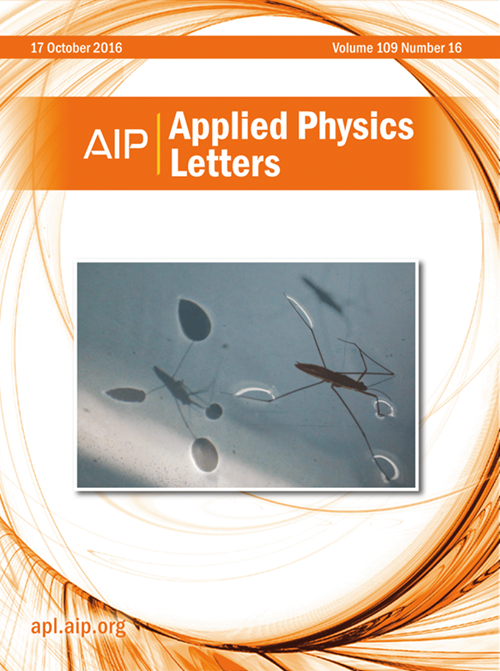引入Al2O3电荷俘获层增强IGZO突触晶体管的长期记忆
IF 3.5
2区 物理与天体物理
Q2 PHYSICS, APPLIED
引用次数: 0
摘要
受大脑启发的神经形态计算被广泛认为是克服当前计算机系统中传统冯·诺伊曼体系结构局限性的一种有前途的解决方案。人工突触装置作为神经形态系统的重要组成部分,在适应性学习中显示出巨大的潜力。由于其可控的通道电导和CMOS兼容性,固体电解质门控突触晶体管(EGSTs)作为下一代神经形态器件获得了极大的兴趣。然而,现有的大多数EGSTs都存在离子快速自扩散的问题,难以维持稳定的通道电导状态。本文采用氧化铟镓锌作为沟道层,Al2O3作为电荷捕获层,ZrO2作为固体电解质层制备了突触晶体管。Al2O3层中的正电荷抑制了氢离子的自扩散,显著提高了器件的长期塑性(LTP)。通过调整突触前脉冲方案,模拟了典型的突触行为,包括兴奋性突触后电流、成对脉冲促进和短时记忆向长时记忆的过渡。基于突触晶体管通道的电导调制特性,构建人工神经网络进行模式识别,准确率高达95.4%。这项工作证明了一种有效的策略来增强突触晶体管的LTP。本文章由计算机程序翻译,如有差异,请以英文原文为准。
Enhancement of long-term memory of IGZO synaptic transistors by the introduction of an Al2O3 charge trapping layer
Brain-inspired neuromorphic computing has been widely considered a promising solution to overcome the limitations of traditional von Neumann architecture in the current computer system. As an essential component of the neuromorphic system, the artificial synaptic device exhibits great potential in adaptive learning. Due to their controllable channel conductance and CMOS compatibility, solid electrolyte-gated synaptic transistors (EGSTs) have garnered significant interest as next-generation neuromorphic devices. However, most of the existing EGSTs suffer from rapid self-diffusion of the ions, making it difficult to maintain the stable channel conductance states. In this work, the synaptic transistors were fabricated with indium–gallium–zinc oxide as the channel layer, Al2O3 as the charge trapping layer, and ZrO2 as the solid electrolyte layer. The self-diffusion of the hydrogen ions can be suppressed by the positive charges trapped in the Al2O3 layer, which significantly improves the long-term plasticity (LTP) of the devices. By adjusting the presynaptic spike scheme, the typical synaptic behaviors, including excitatory postsynaptic current, paired-pulse facilitation, and the transition from short-term memory to long-term memory, were simulated. Based on the conductance modulation properties of the channel in the synaptic transistor, an artificial neural network was constructed for pattern recognition, and a high accuracy of 95.4% was obtained. This work demonstrates an effective strategy for the enhancement of the LTP of the synaptic transistor.
求助全文
通过发布文献求助,成功后即可免费获取论文全文。
去求助
来源期刊

Applied Physics Letters
物理-物理:应用
CiteScore
6.40
自引率
10.00%
发文量
1821
审稿时长
1.6 months
期刊介绍:
Applied Physics Letters (APL) features concise, up-to-date reports on significant new findings in applied physics. Emphasizing rapid dissemination of key data and new physical insights, APL offers prompt publication of new experimental and theoretical papers reporting applications of physics phenomena to all branches of science, engineering, and modern technology.
In addition to regular articles, the journal also publishes invited Fast Track, Perspectives, and in-depth Editorials which report on cutting-edge areas in applied physics.
APL Perspectives are forward-looking invited letters which highlight recent developments or discoveries. Emphasis is placed on very recent developments, potentially disruptive technologies, open questions and possible solutions. They also include a mini-roadmap detailing where the community should direct efforts in order for the phenomena to be viable for application and the challenges associated with meeting that performance threshold. Perspectives are characterized by personal viewpoints and opinions of recognized experts in the field.
Fast Track articles are invited original research articles that report results that are particularly novel and important or provide a significant advancement in an emerging field. Because of the urgency and scientific importance of the work, the peer review process is accelerated. If, during the review process, it becomes apparent that the paper does not meet the Fast Track criterion, it is returned to a normal track.
 求助内容:
求助内容: 应助结果提醒方式:
应助结果提醒方式:


